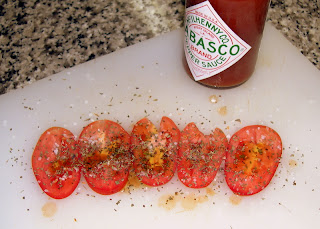The questions for today's bread are
- Will a high salt pre-treatment result in a different flavor?
- Will King Arthur Artisan Flour, even though it has a lower protein content produce a light dough?
- What is the best shape to fit into a USPS Priority Mail box O-FRB1 ( 11" X 8.5" X 5.5" )?
- Does the old Collico yeast from Chile still work?
The formula
A standard 100:60 bread
- Flour: 3600 gm (=2200gm KA Artisan+800gm KA Bread+300gm KA All Purpose Unbleached + 300gm KA Whole Wheat)
- Water: 2160gm
- Collico Instant Yeast: 14gm (0.38%)
- Salt: 72gm
- Melao: 10gm
Pre Treatment
- Mix 300gm KA All-Purpose Unbleached with 300gm KA WW. The WW has no malted barley flour, so that the alpha and beta amylase in the KA All-Purpose should act upon the entire 600gm flour mass.
- Add a 672gm solution of 2M NaCl made from 600gm water + 72 gm salt. (This is the equivalent of 12% w/v salt brine.
- Mix to form a thick batter.
- Allow to rest for 8-10 hours at 40C in proofer.
Mixing
- Weigh out the remaining 3kg (=2.2kg KA Artisan + 0.8kg KA Bread)
- Weigh 1800-240gm(since already in batter)=1560gm water. (There was an error in weighing that made this 80gm short=1480gm) Heat to 40C
- Mix 14gm yeast with 10gm melao into warm liquid
- Let dissolve 5 minutes
- Mix gently with paddle at lowest speed for 20 minutes (aerobic growth)
- Mix pre-treatment batter, liquid, and 3kg flour.
- Mix 7-8 minutes at first speed (This is from KA farinograph information)
Rising
Rising temperature 27C.
First hour showed moderate rise. When knocked down, the dough was still resistant and somewhat dense. At second hour, the dough was much higher with better force and lightness.
Dough went to forming at the end of the third hour. The fermentation structure was active and the dough was extremely light.
 After 3 hours of rising with two-knockdowns
After 3 hours of rising with two-knockdownsForming
The dough was formed into:
- 4 x 400gm loaves in couchette
- 4 x 400gm batons that proofed for 40 minutes, then were stretched and cut into ciabatta
- 26 x 95gm pistolet rolls
Les couchettes----



The batons of protein are stretched out a cleaved using a stainless steel enzyme, similar to the PCR process
Baking
Bake at 230C with stones soaked at temperature for >40 minutes. The rolls and ciabatta were baked at 13 minutes, the loaves for 15 minutes.
THE T-N-T Sandwich
A good thing to do with fresh, hot bread...
- Slice one ripe tomato into thin slices

- On the cutting board, sprinkle the tomato slices with coarse salt, dried basil (it rehydrates as the salt pulls water out of the tomatoes from osmosis), olive oil (light drizzle) and...
- TABASCO sauce or TABASCO Chipotle sauce
Therefore, we have a Tomato and Tabasco sandwich. T-N-T.
Commentary
The finished bread has good crumb structure that is light, but is slightly less open than when the mix of 90:10 KA Bread:KA WW is used. The 'nose' is fresh and of grains, as would be expected from a low-yeast bread (<1% yeast). Flavor is good with light sweetness hints of nuts. Overall, less chewy than the full KA Bread.
Unfortunately, it is not clear if the weaker structure is due to the use of a slightly less 'strong' artisan flour, or if the less strong flour was actually developing adequate gluten, but the resulting gluten strands were being damaged by the bran present in the whole wheat. This suggests a second experiment using only KA artisan flour.
It is probable that amylase activity produced sufficient sugars even under the conditions of 2M salt solution as is evidenced by the rapid and strong development during rising. The light sweetness could again show a lack of bacillus strains. Again, this requires validation by a non-brine pre-treatment.
How much bread can fit in the box?
Approximately 2kg....








No comments:
Post a Comment